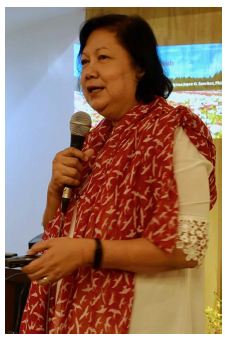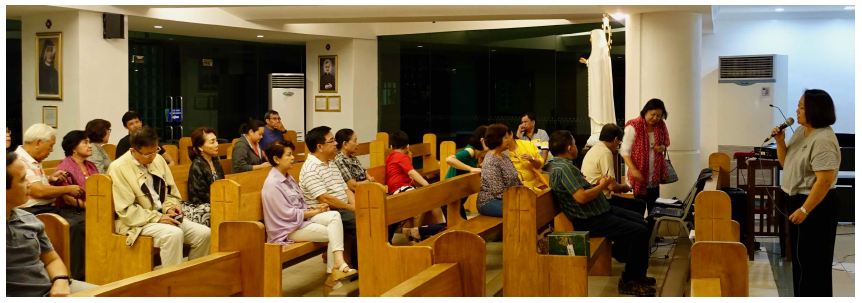DK Sponsors Mindfulness Talk
 Diwanihan Kristiyano organized a talk with accompanying exercises last October 31 on the increasingly-popular topic of ‘Mindfulness’, a process of focusing on the present. Mindfulness is the basic human ability to be fully present, aware of where we are and what we’re doing, and not overly reactive or overwhelmed by what’s going on around us. Scientific studies had shown that consistent mindfulness results in better levels of physical and mental health and reduces stress, depression and anxiety.
Diwanihan Kristiyano organized a talk with accompanying exercises last October 31 on the increasingly-popular topic of ‘Mindfulness’, a process of focusing on the present. Mindfulness is the basic human ability to be fully present, aware of where we are and what we’re doing, and not overly reactive or overwhelmed by what’s going on around us. Scientific studies had shown that consistent mindfulness results in better levels of physical and mental health and reduces stress, depression and anxiety.
Invited by Diwanihan Kristiyano head Loung and Mon Cuartero to give the talk was Dr. Myrna Sanchez PhD, a senior counselor at CeFam, at San Carlos Seminary, and at Lorenzo Mission. She is also a faculty member at the Loyola School of Theology and at St. Scholastica’s College.
Dr. Myrna first mentioned the pioneers in the field, specifically Jon Kabat-Zinn, founder of the ‘Center for Mindfulness in Medicine, Health Care and Society’ at the University of Massachusetts School of Medicine, and Richard Davidson, founder of the ‘Center for Investigating Healthy Minds’ at the University of Wisconsin. The two pioneers had staged similar studies that proved that experimental groups tutored for eight weeks in mindfulness and meditation techniques reflected jumps in left prefrontal cortex activity compared to control groups that recorded no change in brain activity. And people with active left prefrontal cortex tend to describe themselves as ‘interested’, ‘excited’, ‘active’, ‘alert’, and ‘enthusiastic’. The studies have concluded that just eight weeks of mindfulness training in a busy workplace environment can have a positive effect on well-being.
 Dr. Myrna had the attendees do some simple meditation exercises. The first was ‘mindful ’ breathing where the person pays attention to every breath taken in and given out, mentally reciting suggestive words, and visualizing images. Another set of exercises was on practicing the various senses, especially on touch, smell, sound and taste.
Dr. Myrna had the attendees do some simple meditation exercises. The first was ‘mindful ’ breathing where the person pays attention to every breath taken in and given out, mentally reciting suggestive words, and visualizing images. Another set of exercises was on practicing the various senses, especially on touch, smell, sound and taste.
She gave five tips for regularly practicing mindfulness:
1 Set aside some time. You don’t need a meditation cushion or bench, or any sort of special equipment to access your mindfulness skills—but you do need to set aside some time and space.
2 Observe the present moment as it is. The aim of mindfulness is not quieting the mind, or attempting to achieve a state of eternal calm. The goal is simple: we’re aiming to pay attention to the present moment, without judgement. Easier said than done, we know.
3 Let your judgments roll by. When we notice judgements arise during our practice, we can make a mental note of them, and let them pass.
4 Return to observing the present moment as it is. Our minds often get carried away in thought. That’s why mindfulness is the practice of returning, again and again, to the present moment.
5 Be kind to your wandering mind. Don’t judge yourself for whatever thoughts crop up, just practice recognizing when your mind has wandered off, and gently bring it back.

